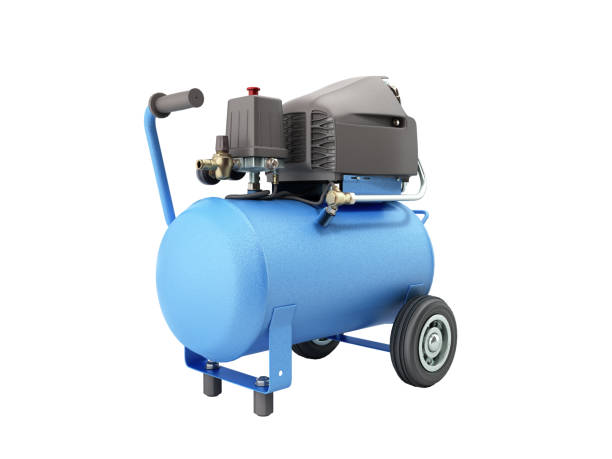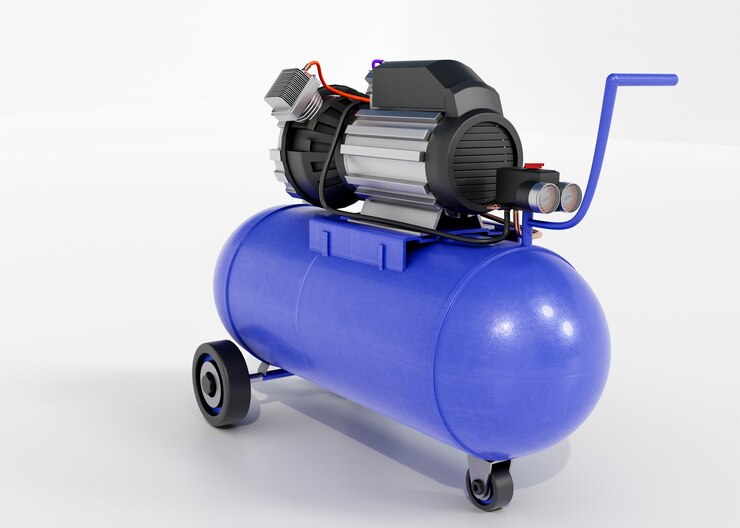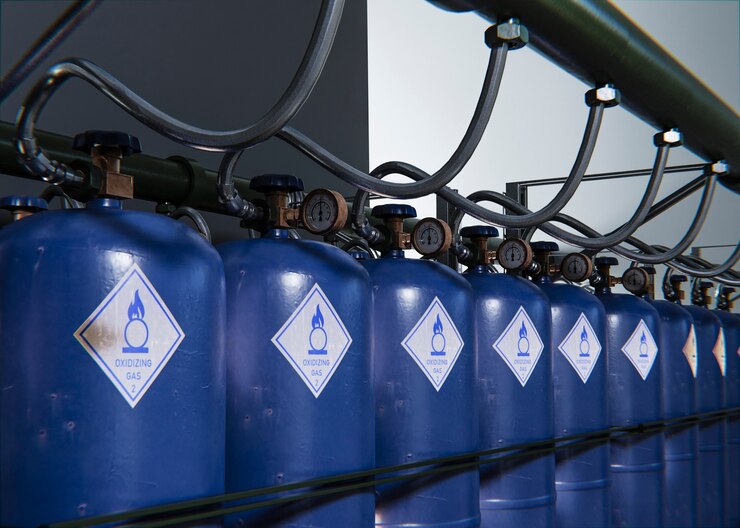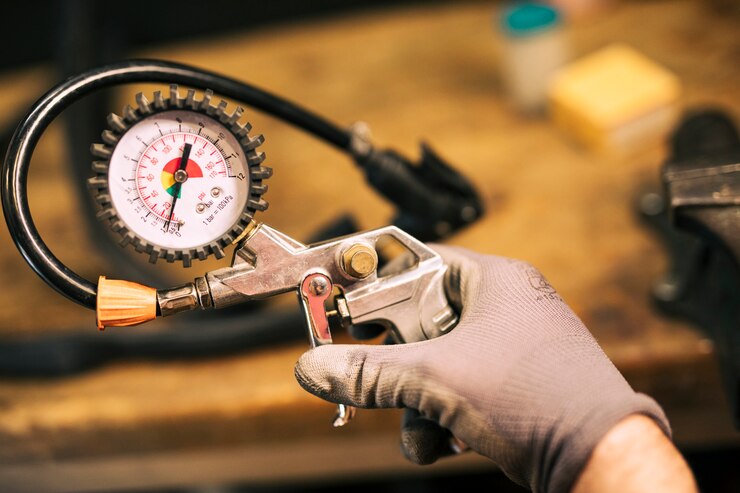Reciprocating Compressor: A Comprehensive Guide
The Powerhouse of Pressure: A Comprehensive Guide to Reciprocating Compressor
Pressurized gas is used in many aspects of our daily lives, from powering industrial machines to keeping food cold. The reciprocating compressor, a workhorse that raises the pressure of several gases, is at the centre of this pressured environment. This essay explores the complex world of these compressors, including their types, uses, parts, upkeep requirements, and competitive environment.
Gaining An Understanding of Reciprocating Compressors Through Positive Displacement
Positive displacement compressors include these compressors, commonly referred to as piston compressors. Reciprocal compressors, in contrast to their dynamic equivalents (such as centrifugal compressors), trap and compress gas through the movement of pistons inside a cylinder. Boyle’s Law states that this back-and-forth motion, which is propelled by a crankshaft, lowers the volume that the gas may occupy and so raises its pressure.
Reciprocating Compressor Types: An Entire Universe of Design Options
This compressor industry offers a wide range of designs, each meeting distinct requirements. Here’s an overview of the most typical kinds:
- Piston Compressor:
The most popular kind, piston compressors compress gas by using one or more pistons inside cylinders. They are renowned for being easy to use, dependable, and capable of producing high-pressure outputs.
- Diaphragm Compressor:
Rather than using a piston, these compressors use a flexible diaphragm. They are frequently utilized in lab and medical environments and are perfect for applications needing oil-free gas.
- Swashplate Compressor:
This design allows for variable displacement and effective operation over a larger pressure range since a swashplate controls the angle of the pistons.
Unveiling the Applications: Where Reciprocating Compressors Shine
Because of their adaptability and pressure-holding capacity, reciprocating compressor is the hidden heroes of many different sectors. Let us examine many of their principal uses:
- The Comfort Crusaders:
The engines that power our homes’ air conditioners and refrigerators are these compressors. They put in an endless effort to maintain a cool, cosy atmosphere and guarantee appropriate food preservation.
- The Power Behind Pneumatic Tools:
Pneumatic tools are powered by these compressors, which are the quiet partners behind a variety of pneumatic instruments. These tools range from inflating tyres at your neighbourhood garage to powering nail guns in construction. Their capacity to supply pressured air makes them indispensable for supplying energy to a variety of machinery used in production, vehicle maintenance, and other fields.
- Putting Gas in the Engine:
Processing Natural Gas, an essential component of the natural gas sector is these compressors. They are in charge of pressurizing natural gas, which makes it possible for it to be transported across long distances in pipes efficiently. This guarantees that families and businesses will always have access to this essential fuel.
- Industrial Powerhouses:
These compressors are essential to many different industrial operations, even in addition to being comfortable and convenient. They power pneumatic actuators that automate numerous operations and are used in plastic moulding to create desired shapes and expedite reactions in chemical production. They are an invaluable asset in many industrial settings because of their capacity to withstand a broad variety of pressures.
Reciprocal compressor has many uses, and by learning about them, we may better appreciate how they affect both industrial operations and our daily lives. These compressors silently shape our environment by enabling efficient energy transfer, guaranteeing cool houses, and powering tools.
The Fundamentals: An Inside Look at the Reciprocating Compressor
The workhorses of the compressed air industry, these compressors, depend on a cohesive group of parts to operate well. Let’s examine the main figures in charge of their operation:
- The Powerhouse:
The compressor’s heart is the appropriately titled piston, which is also known as the powerhouse. It is a cylindrical component that compresses and traps gas by moving back and forth inside a chamber. The compression process depends on the piston’s movement.
- The Basis: Cylinder:
A cylinder is a metal tube, as you can imagine. It gives the piston a sealed environment in which to work. The compression ratio that the compressor can achieve is directly impacted by the size of the cylinder. Greater volume change is possible with a larger cylinder, which raises the pressure.
- The Conductor: Crankshaft:
The conductor is the rotating shaft, which serves as the maestro by transforming the connecting rod’s reciprocating (back-and-forth) motion into rotational motion. The compressor’s other parts are driven by the crankshaft’s rotation, which maintains synchronization.

- The Translator: Connecting Rod:
The Translator, also known as the Connecting Rod, is an essential part that serves as a link between the crankshaft and piston. It ensures the effective transfer of power within the compressor by translating the movement of the piston into the rotation of the crankshaft.
- The Gatekeepers: Valves:
These are one-way valves that are essential for controlling the flow of gas. During the intake stroke, the intake valve permits gas to enter the cylinder, and during the compression stroke, the discharge valve opens to release the compressed gas. Effective compression and the avoidance of pressure leaks are guaranteed by proper valve operation.
- The Unheralded Champion: Lubricant
The significance of lubricant should not be overlooked! To minimize wear and tear, reduce friction between moving parts, and ensure optimal compressor performance, it is essential. To maintain the smooth operation of your reciprocating compressor, regular oil changes are necessary.
You will have a better understanding of the complex dance that occurs within a reciprocating compressor if you are aware of these important parts and their functions. A multitude of uses in our daily lives are powered by compressed air delivered efficiently by this well-oiled machine.
Reciprocating Compressor Maintenance: A Guide to Sustaining Maximum Performance
Reciprocal compressor needs routine maintenance to maintain smooth operation, lifespan, and peak performance, just like any other demanding machinery. The following is a summary of essential maintenance procedures to maintain your compressor operating at peak efficiency:
- Oil Changes Are Important:
Consider the oil as your compressor’s life force. Frequent oil changes keep the engine properly lubricated and lower friction between moving parts by removing impurities that accumulate during operation. For suggested oil change intervals, refer to the manual that came with your compressor. If you ignore this, wear and tear will rise and affect the compressor’s lifespan and performance.
- Remember the Filters:
Air filters are essential for shielding the interior parts of your compressor. They guard against debris, dust, and filth getting inside the system, which could harm it and impair its functionality. Replace air filters regularly according to the manufacturer’s recommendations. Restricting airflow and decreasing efficiency due to clogged filters necessitates frequent filter changes for optimal performance.
- Inspection of valves is crucial:
Over time, wear and tear affect even the toughest valves. Intake and outflow valves should be inspected frequently to make sure they are operating correctly. Reduced performance, pressure leaks, and even total compressor failure can result from worn or damaged valves. According to the manufacturer’s guidelines or the evaluation of a certified technician, replace valves as necessary.
Your reciprocating compressor lifespan can be greatly increased and dependable performance can be guaranteed for many years to come by implementing these easy-to-follow but efficient maintenance procedures into your routine. Do not forget that the secret to optimizing
Exposing the Benefits: The Reasons Why Reciprocating Compressors Are the Best
Reciprocating compressor are dependable and adaptable workhorses in the compressed air industry. But why are they such a well-liked option? Let’s examine the main advantages that have solidified their position in a variety of industries:
- A powerhouse of Pressure:
Reciprocating compressors are excellent at producing outputs at high pressure. Because of this, they are perfect for uses that call for strong, focused airflows, such as operating pneumatic tools in industrial or construction environments. When compared to certain rotary screw compressors, they can reach noticeably higher-pressure levels.
- Simple and Reliable Design:
The simplicity of reciprocating compressors’ design is what gives them their attractiveness. They are typically simpler to maintain and repair because they have fewer moving parts than certain complicated compressor kinds. This means that your operations will have more uptime and pay less for maintenance.
- Adaptable to Various Applications:
Another important quality is versatility. Reciprocating compressors are available in a variety of sizes and designs to meet the needs of diverse applications. There is a reciprocating compressor that can be used for industrial processes or for small-scale tasks like powering nail guns.
- Cost-Effective Solution:
These compressors are frequently a cost-effective option for applications needing high-pressure and intermittent use. Because of their often-lower initial cost as compared to some other compressor types, they are a desirable choice for consumers on a tight budget.
- Readily Available and Supported:
Reciprocating compressor is widely used and so easily accessible from several manufacturers. This reduces downtime in the event of any problems by guaranteeing simple access to replacement components and skilled repair experts.
With this knowledge in hand, you will be able to select the best compressor for your requirements. These compressors are a tempting solution for a wide range of applications across several industries because of their high-pressure capabilities, straightforward design, and versatility.
Conclusion:
With a global presence, LEIYAO Compressor serves customers on all continents. Equipped with a deep comprehension of the demands and obstacles faced by the compressor sector, we are committed to establishing ourselves as a prominent player in this domain.



